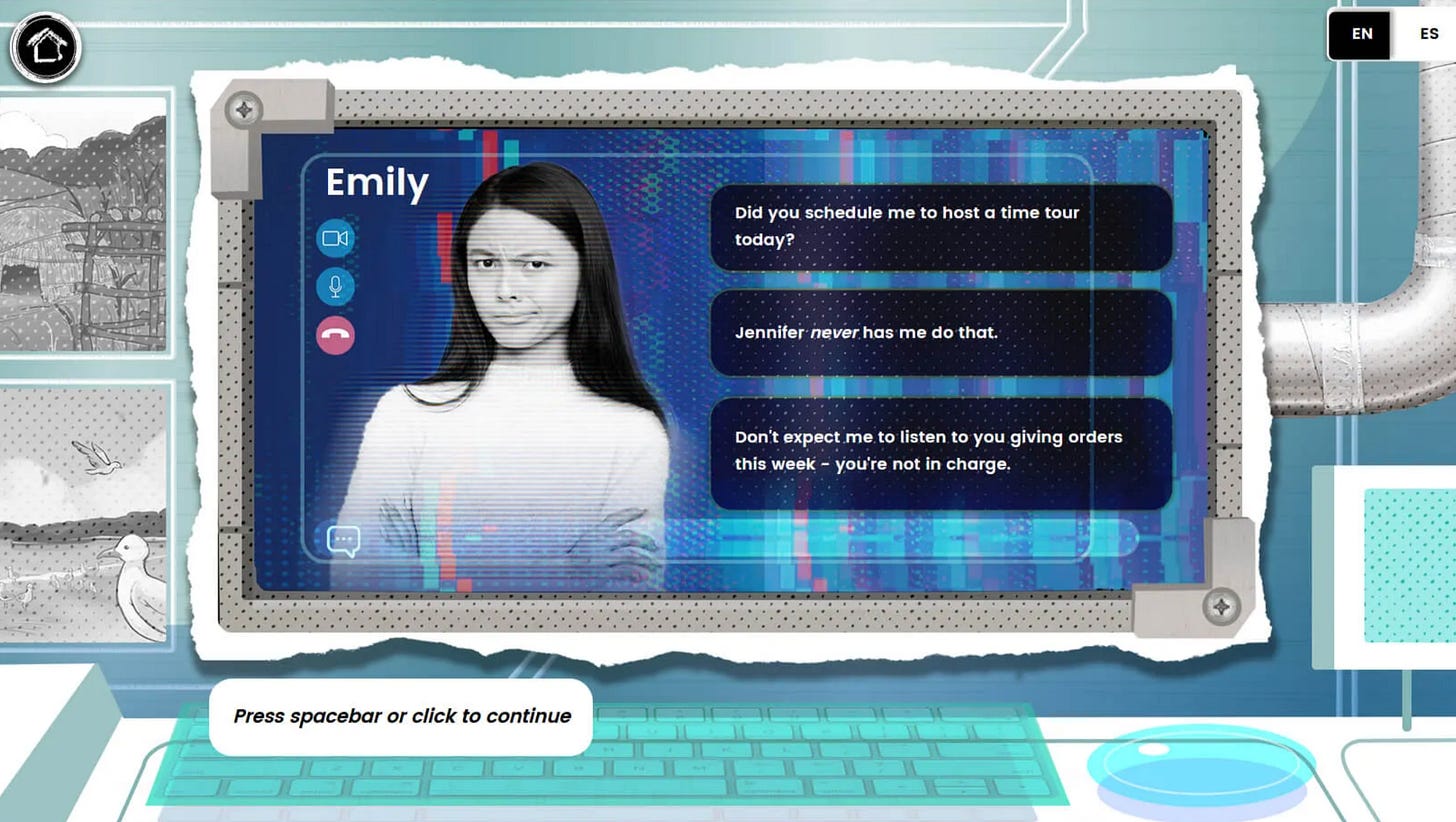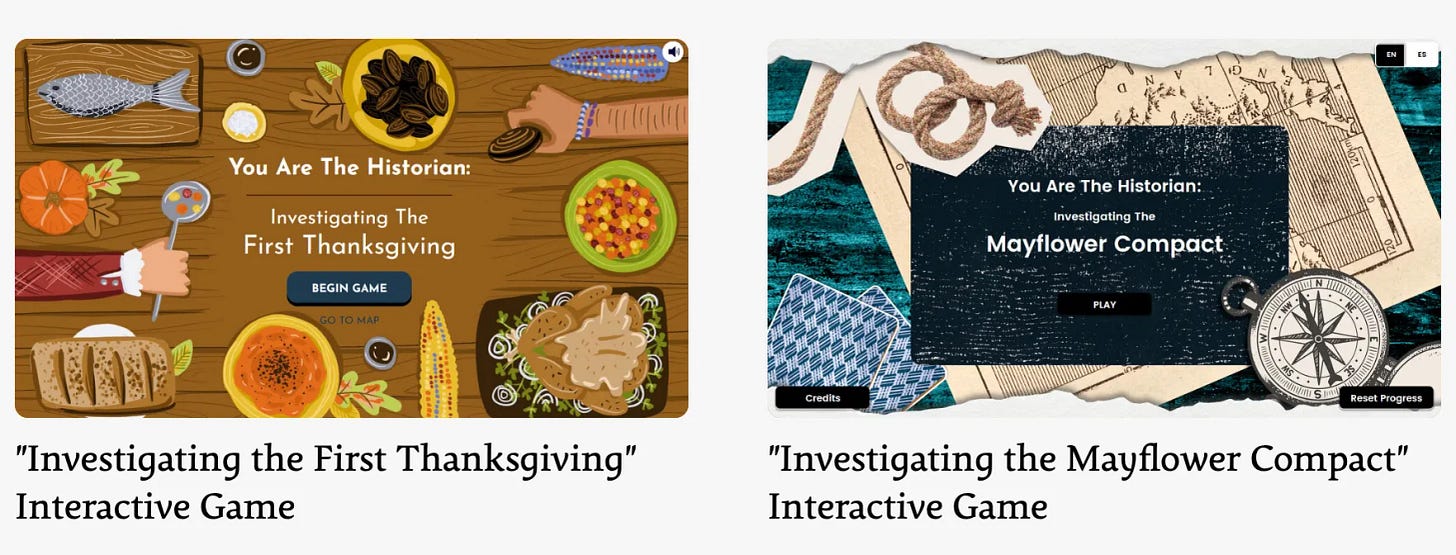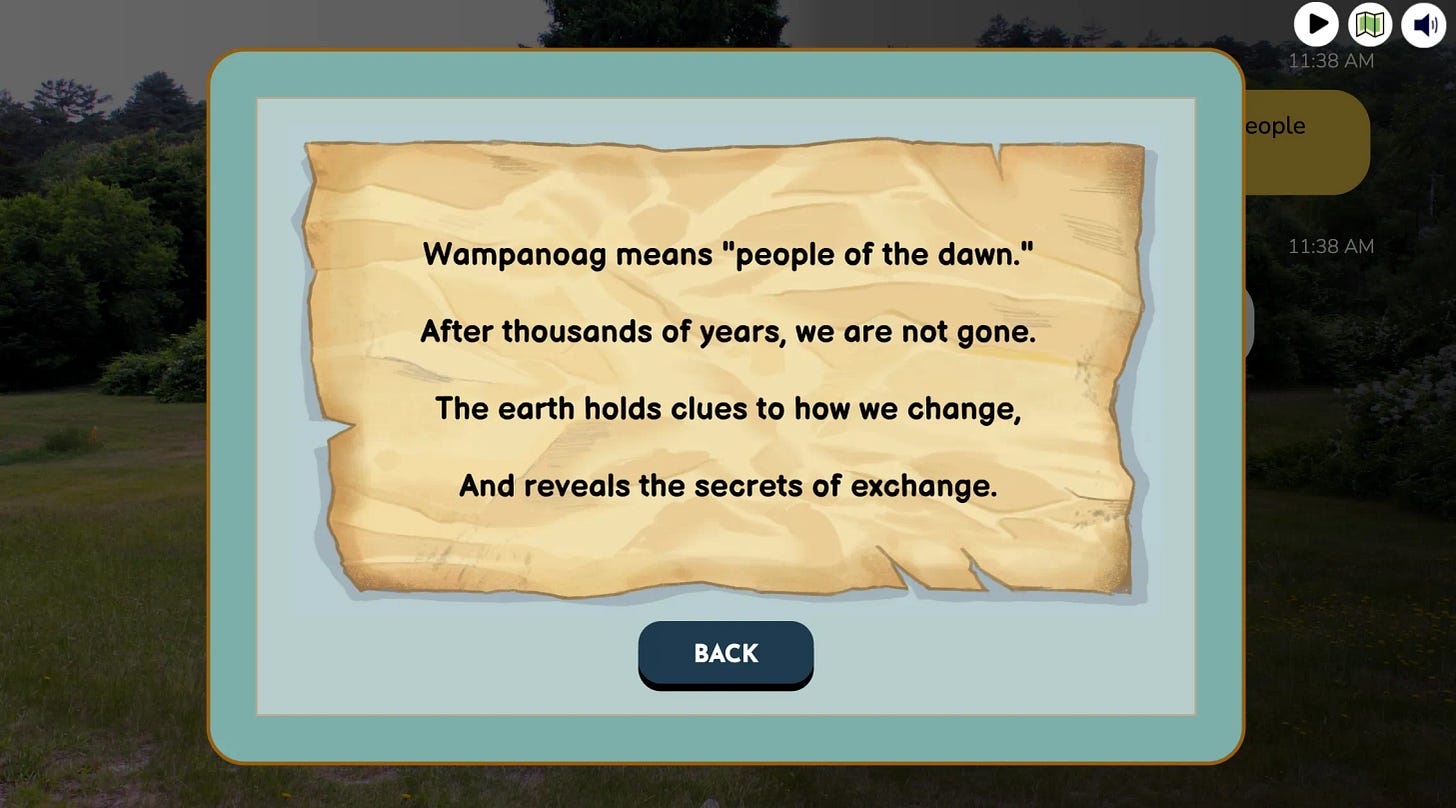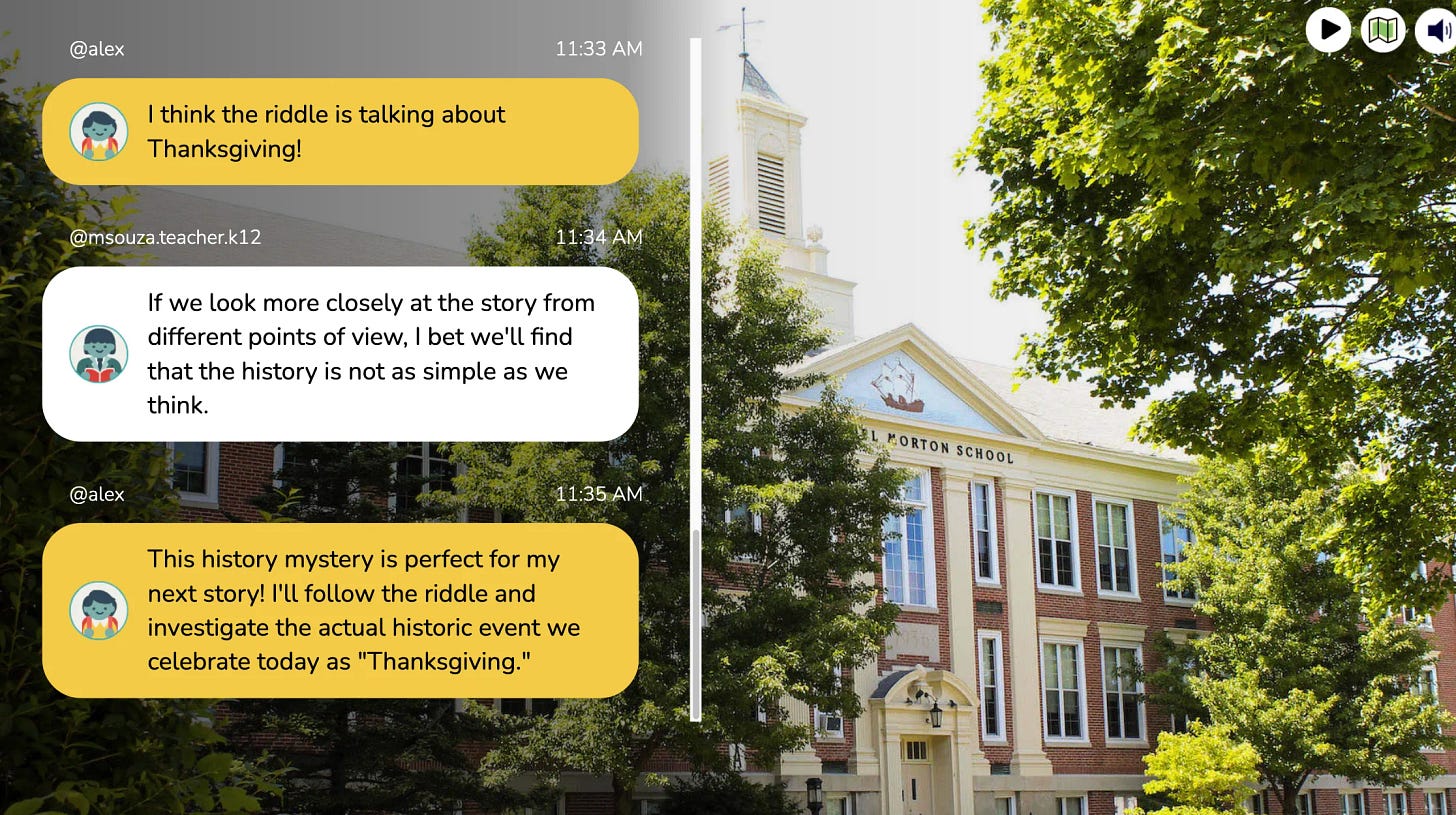Go Beyond the Hand-Turkey: Two Free Games That Teach the Real History of Thanksgiving
A leading history museum has released virtual interactive adventures to help kids understand early America.
Every November, parents and teachers face the same challenge: how do we talk about Thanksgiving in a way that is historically accurate, engaging, and goes beyond the simplified myths of pilgrims and turkeys? It’s a complex piece of history. Finding resources that are both fun for kids and historically responsible can feel impossible.
That’s where Plimoth Patuxet Museums (located in Plymouth, Massachusetts), a leader in 17th-century history, comes in. They’ve developed two free, high-quality online games that transform this complex history into an immersive adventure. These aren’t just quizzes; they’re fully interactive experiences designed to make kids think.
The Mystery: “Investigating the First Thanksgiving”
This game is perfect for the child who loves a good mystery. Instead of a history lecture, it frames the learning as a journalistic investigation. Players take on the role of an investigative journalist for their high school paper, tasked with uncovering the real story of the 1621 harvest celebration.
As they hunt for clues and solve riddles, players are “transported to Patuxet, the pre-European homeland of the Wampanoag,” and immersed in a story of cultural change that spans 12,000 years.
What makes this game a standout resource is its approach. It directly challenges the simplified version of the holiday many kids already know and instead centers the Wampanoag perspective, telling a deeper story of cultural change and persistence. For educators looking to expand on the lesson, the museum also provides a full set of free resources and tools to bring these discussions into the classroom.
The Sci-Fi Adventure: “Investigating the Mayflower Compact”
How do you make a 400-year-old document interesting to a 10-year-old? You turn it into a time-travel mission. Players become employees at a futuristic time travel agency. Their mission is to solve a series of challenges to understand how the 1620 Compact shaped the idea of self-government.
Through six interactive mini-games, students explore the “Who, What, When, Where, Why, and How” of this pivotal document. They’ll virtually stand on the decks of the Mayflower in 1620, braving a stormy sea as they learn what it takes to build a new community.
This game’s strength lies in its ability to gamify a foundational, but often dry, topic in American history. The “time travel” theme gives kids a clear and exciting objective, helping to connect a 400-year-old document to the real-world concepts of rules, community, and self-government in a way that a textbook simply can’t.
Learning That Sticks
What makes these games so valuable is that they don’t just stop at historical facts. They encourage kids to think about how that history shapes the world we live in today. By making these tools free and accessible to everyone online, Plimoth Patuxet Museums is offering parents and educators a powerful alternative to myth-making. They invite children to become active participants in historical discovery, encouraging critical thinking while making learning genuinely fun.
To learn more or play the free virtual games, visit the Plimoth Patuxet Museums’ website at https://plimoth.org/yath.





